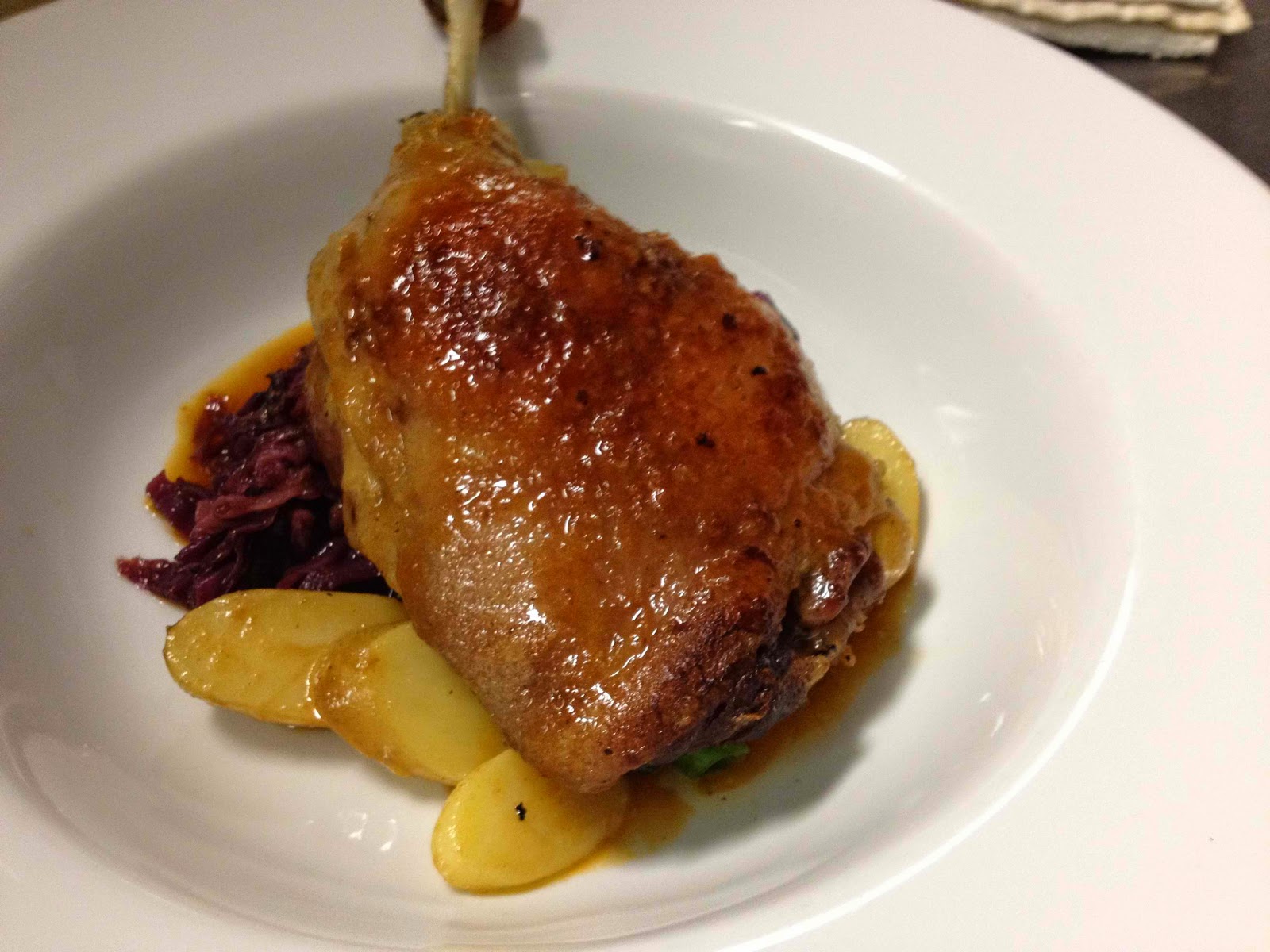The French word confit means "preserved," and the process was devised as a means of preserving a variety of meats and poultry — most traditionally goose, duck, or pork. It involves fully curing the meat in salt, then poaching it slowly in fat, and storing it covered with the fat until you are ready to eat it or cook with it. The technique evolved over thousands of years in different cultures around the world, but, clearly, it is a dying art.
Curing the meat in salt makes the water in it unavailable to microorganisms, which renders them incapable of causing spoilage. Covering the meat with at least an inch of fat after it has been cooked keeps air from reaching it, further retarding the tendency to spoil. If the meat has been properly cured, a confit will keep in a cool, dark place (a cellar or refrigerator) for six months. You can also renew a confit after the first six months by recooking it, in which case, it will last for another four to six months. (For best, flavor, however, the confit should be consumed within three to five months of the initial cooking).
Good quality confit is also sold in cans, which can be kept for several years. The flavorful fat from the confit may also be used in many other ways, as a frying medium for sautéed vegetables (e.g., green beans and garlic, wild or cultivated mushrooms), savory toasts, scrambled eggs or omelettes, and as an addition to short crust pastry for tarts and quiches.
A classic duck confit recipe is to fry or grill the legs in a bit of the fat until they are well-browned and crisp, and use more of the fat to roast some potatoes and garlic as an accompaniment. The potatoes roasted in duck fat to accompany the crisped-up confit is called pommes de terre à la sarladaise. Another accompaniment is red cabbage slow-braised with apples and red wine.
The legs and thighs are the fattiest portions of the bird and therefore the ones you want to use. Allowing the legs to sit overnight or longer with herbs imparts more flavor into the meat and fat. Since the meat will be hanging out in the fat for a nice long time as it slowly cooks, it's worth it to seek out high-quality fresh herbs.
Duck confit is also a traditional ingredient in many versions of cassoulet.
Servings: 4 to 6
INGREDIENTS:
Six duck legs
36 garlic cloves
8 cups of rendered duck fat
kosher salt
1/2 tsp ground cumin
1/2 tsp ground coriander
1/2 tsp ground cinnamon
1/2 tsp ground allspice
1/2 tsp ground ginger
1/4 tsp freshly ground nutmeg
1/8 tsp ground cloves
1/4 tsp finely crumbled dried thyme
1 Turkish bay leaf, finely crumbled
PROCEDURE:
1) Mix all the spices together and sprinkle them evenly over the legs.
2) Measure out enough kosher salt to have 1/3 ounce for each pound of meat, and sprinkle it evenly over all sides of the legs.
3) Set them in a flat, glass baking dish with the garlic cloves, cover with plastic wrap, and cure them in the refrigerator for 36 hours.
4) Preheat the oven to 275°F (135°C;).
5) Drain all the liquid from the baking dish.
6) Pat the legs, garlic cloves, and dish dry.
7) Return the legs and garlic to the dish and cover with the duck fat. Bake until the garlic cloves have turned a deep golden color, which will take 2 to 2-1/2 hours.
8) Let the meat cool in the fat until it can safely be transferred to a large canning jar.
9) Strain the fat through a cheesecloth, and pour enough over the meat to cover it by at least an inch.
10) Cool it completely, seal the jar, and store it in a cool, dark place such as a cellar or refrigerator for up to six months.
Once your confit is finished, it'll keep for up to six months refrigerated and the leftover duck fat can be re-used for frying potatoes, eggs, plantains and making popcorn.
Learn... how to make clarified butter.


No comments:
Post a Comment